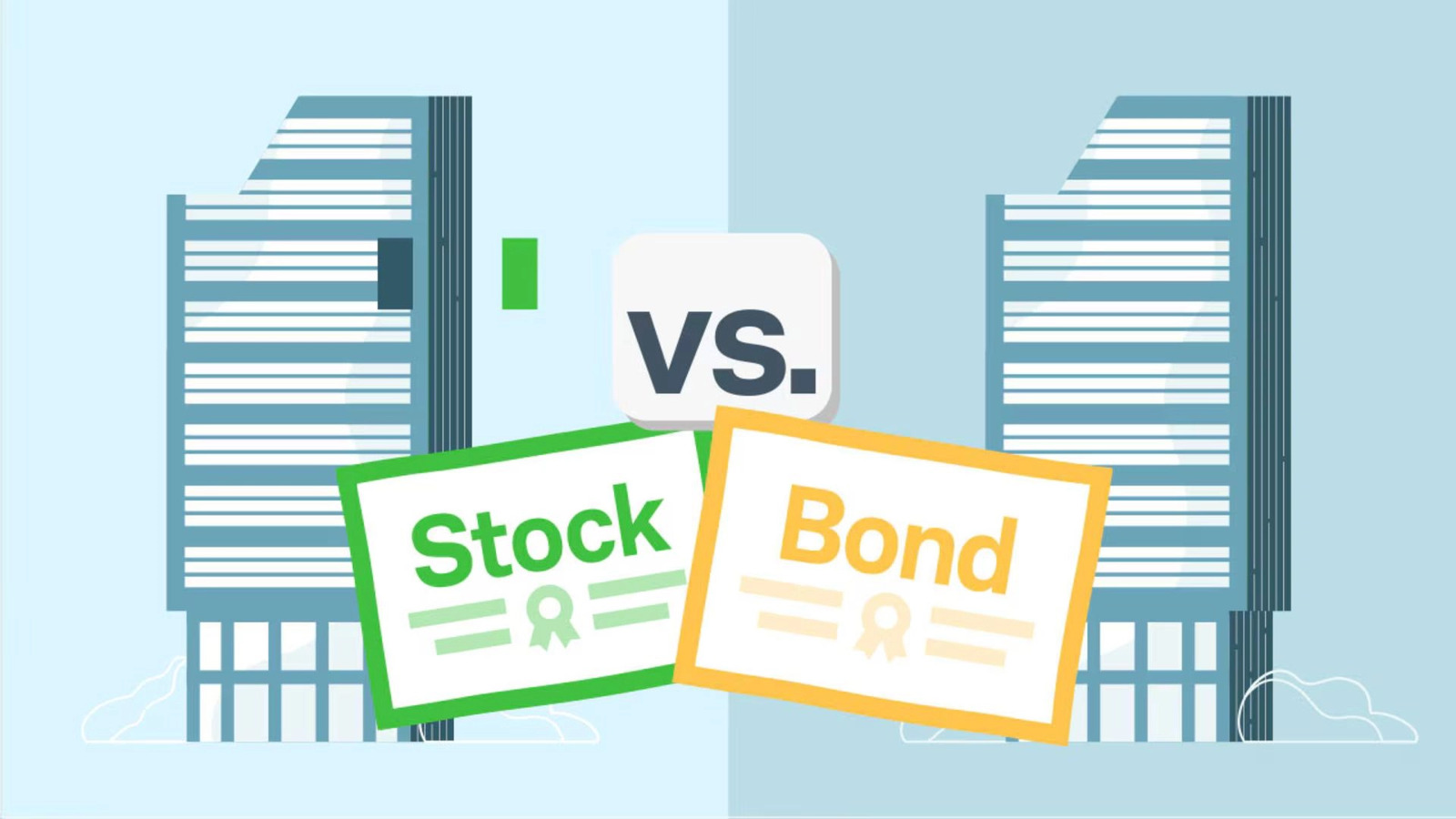In today’s financial landscape, making informed investment choices is more crucial than ever. In this blog, you will learn about the fundamental differences between bonds and stocks, including their risks, potential returns, and how they can fit into your financial strategy. By the end of this post, you’ll have a clearer idea of which investment may be best for you based on your personal financial goals.

Understanding Bonds and Stocks
A. Defining Bonds
Bonds are fixed-income securities that are considered safer alternatives to stocks. When you purchase a bond, you are essentially lending money to the issuer (which could be a government, municipality, or corporation) in exchange for periodic interest payments and the return of the bond's face value when it matures. They are typically categorized into three types:
Government Bonds: Issued by national governments, these bonds usually come with low risk and low yields.
Corporate Bonds: Issued by companies, corporate bonds carry higher risk due to potential defaults, but also offer higher yields.
Municipal Bonds: These are issued by states and municipalities and often come with tax benefits.
Investors often incorporate bonds in their portfolios due to their predictable returns and lower volatility compared to stocks. Bonds can help preserve capital while generating fixed income, making them a fundamental part of a balanced investment strategy.
B. Defining Stocks
Stocks represent ownership in a company; when you buy shares, you become a part-owner and can benefit from the company’s success. Stocks are generally seen as riskier investments compared to bonds, but they also have the potential for higher returns. Key types of stocks include:
Common Stocks: These grant shareholders voting rights and dividends that can fluctuate based on company performance.
Preferred Stocks: These offer fixed dividends but usually don't come with voting rights. They have a superior claim on assets compared to common stock in the event of liquidation.
Understanding stocks' role in investing may lead you to consider dividends, which are payments made to shareholders from the company’s profits. This aspect can provide income even when stock prices are falling, highlighting the allure of owning shares in a prosperous company.
Comparing Risk and Return
A. Risk Factors for Bonds
Despite being perceived as safer, bonds are not free from risk. Several factors can impact bond performance and yield, such as:
Interest Rate Risk: Bond prices fall when interest rates rise. Investors should be aware of the inverse relationship between bond yields and interest rates.
Credit Risk: The issuer's ability to pay interest and principal may be jeopardized, particularly in the case of corporate bonds.
Inflation Risk: Inflation erodes purchasing power, potentially diminishing the real return on bonds.
Bondholders must assess these risks relative to the returns they expect to receive, ensuring their investments align with their financial strategy and risk tolerance.
B. Risk Factors for Stocks
Investing in stocks comes with its own set of risks that can significantly affect your portfolio:
Market Risk: Price fluctuations in the overall market can lead to uninhibited volatility in stock valuations.
Liquidity Risk: The potential difficulty of selling a stock without affecting its price can present challenges for investors.
Company Fundamentals: Investors should carefully analyze financial health and market potential before investing in a stock.
Understanding these risks helps investors determine their comfort level with stock investments and allows them to create a strategic approach reflecting their financial objectives.
The Role of Time Horizon in Investment Choices
A. Short-Term vs. Long-Term Goals in Bond Investments
The time you plan to hold onto an investment heavily influences your choice between bonds and stocks. Bonds often suit short-term investment strategies because they offer more predictable returns:
Bonds typically yield fixed returns, making them attractive for those needing stability or a set income structure shortly.
Longer-term bonds may provide higher yields but come with longer exposure to interest rate fluctuations.
Investors often prioritize bonds for specific financial goals, like saving for a child's education or a home purchase, where predictable cash flow is essential.
B. Short-Term vs. Long-Term Goals in Stock Investments
In stark contrast, investing in stocks is generally better fitted to long-term financial objectives. Some benefits include:
Stocks have historically demonstrated the potential for capital appreciation, with long-term investments yielding higher returns despite short-term volatility.
Investors who can withstand market fluctuations can maximize returns by holding onto investments over a more extended period.
Even during downturns, investors may find solace in the upward potential of companies in which they’ve invested, as economic growth typically stimulates stock market recoveries.
Economic Factors Influencing Bonds and Stocks
A. How Economic Growth Affects Bonds
Economic conditions play a significant role in the performance of bonds. Key influences include:
Inflation: Rising inflation leads to increased interest rates, causing bond prices to fall, which can diminish total returns for bondholders.
Interest Rate Policies: Central bank policies directly influence how rates change, thereby affecting bond attractiveness.
Understanding these factors helps investors make decisions about when to invest in bonds and how to react as the economic landscape shifts.
B. How Economic Growth Affects Stocks
A healthy economy often signals favorable times for stocks as companies tend to perform better during periods of economic expansion:
Increased consumer spending boosts company profits, typically supporting higher stock prices and valuations.
Additionally, rising economic indicators, such as employment rates and GDP growth, often result in an increase in investor confidence, driving stock market performance.
Recognizing these indicators can empower investors to make informed choices about when to enter or exit the stock market.
Diversification and Portfolio Balance
A. The Importance of Including Bonds
Integrating bonds into your investment portfolio can stabilize financial returns. Here’s how:
Bonds generally exhibit lower volatility than equities, providing a counterbalance to market fluctuations.
In times of recession, bonds can help protect capital, ensuring some level of income generation.
A well-diversified portfolio includes both stocks and bonds, helping mitigate risk while still capturing growth opportunities.
B. The Importance of Including Stocks
While bonds provide stability, stocks offer growth potential. Reasons to include stocks in your portfolio include:
Potential for higher returns, particularly over the long-term, which can outpace inflation and enhance overall portfolio performance.
Dividends can provide regular income and significant total returns when reinvested back into a portfolio.
Advocating for a balanced approach with both asset types may lead to optimized investment outcomes based on individual financial goals.
Conclusion: Making Your Choice – Bonds or Stocks
Ultimately, the decision between bonds and stocks comes down to your financial situation and risk tolerance. While bonds offer safety and predictable returns, stocks provide higher growth potential despite increased risks. Reflect on your long-term financial goals and time horizon to determine the right mix that suits your needs. A well-rounded investment strategy takes into consideration both options, recognizing their unique advantages.
Call to Action: Share Your Thoughts!
We encourage our readers to leave comments and share their thoughts on the blog topic. What investment strategies have worked for you? Do you prefer bonds, stocks, or a combination of both? Your insights could be valuable to other investors considering their options!
FAQs
1. What is the difference between bonds and stocks in investment?
Bonds represent debt investments where you lend money to an entity (like a corporation or government) in exchange for regular interest payments and the return of the principal amount upon maturity. Stocks represent ownership in a company, giving you a share in its profits (or losses). While bonds are generally lower-risk, stocks offer higher growth potential but come with greater volatility.
2. What are the different types of bonds I can invest in?
There are several types of bonds to choose from, including:
Government Bonds: Issued by governments and considered very safe.
Corporate Bonds: Issued by companies, offering higher returns with slightly more risk.
Municipal Bonds: Issued by local governments, often with tax benefits.
Convertible Bonds: Can be converted into company shares under certain conditions.
Each type serves different investment goals and risk appetites.
3. Is bonds investment safer than investing in stocks?
Yes, bonds investment is generally considered safer than stocks because they offer predictable returns and lower volatility. However, they usually provide lower potential growth compared to stocks. Stocks carry more risk due to market fluctuations but can yield higher long-term returns. A balanced portfolio often includes both stocks and bonds to optimize risk and reward.
4. What are bond funds, and how do they differ from individual bonds?
Bond funds are mutual funds or ETFs that invest in a diversified portfolio of bonds. Unlike individual bonds, bond funds don’t have a fixed maturity date, and their value can fluctuate based on market interest rates. They’re ideal for investors looking for diversification and liquidity without the need to manage individual bonds directly.
5. How should I decide between stocks and bonds for my portfolio?
Your choice between stocks and bonds depends on factors like your financial goals, investment horizon, and risk tolerance. Younger investors with a long-term horizon may allocate more to stocks for growth, while those nearing retirement might prefer bonds for stability. Diversifying your investments between stocks and bonds helps balance risk and ensure steady returns over time.

